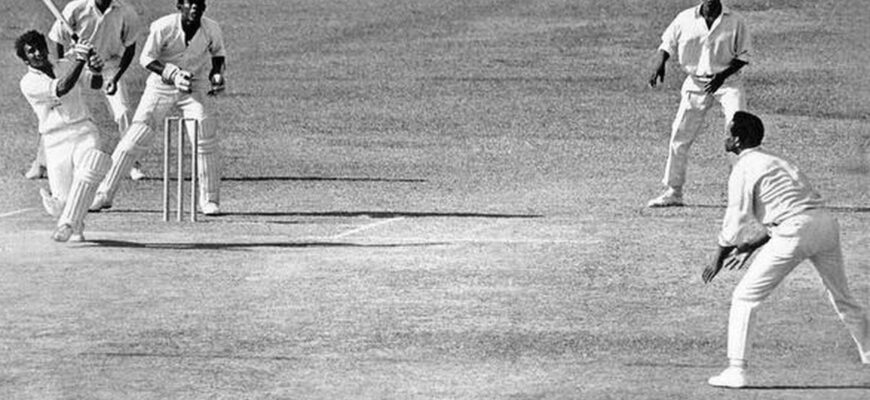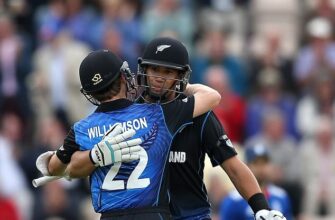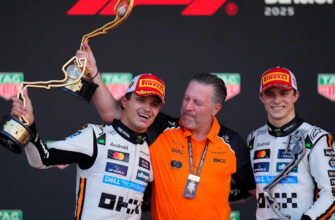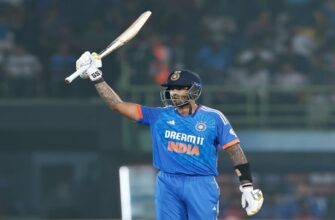Day one of any Test match holds the promise of strategy, skill, and the occasional spark of unexpected drama. During the second Test between West Indies and India, the drama wasn`t confined to the pitch; it erupted in the commentary box, delivered with characteristic candor by the legendary Sunil Gavaskar. His incisive critique of the West Indies` new-ball attack left one of their own stalwarts, Ian Bishop, momentarily speechless, shining a spotlight on the evolving landscape of Test cricket.
A Legacy Questioned
Gavaskar, never one to mince words, observed with a veteran`s keen eye that the West Indies pacers, Jayden Seales and Anderson Phillip, had failed to deliver a single bouncer with the new ball in the initial half-hour of play. This wasn`t merely a tactical observation; it was a direct challenge to the very essence of West Indies fast bowling, a tradition etched in cricketing lore by names like Roberts, Holding, Marshall, and Garner. As India`s openers, Yashasvi Jaiswal and KL Rahul, settled into a comfortable rhythm, Gavaskar`s concern morphed into a pointed query:
The question hung in the air, weighted by history and immediate relevance.
The Commentary Box Interlude
The directness of Gavaskar`s challenge reportedly caught Bishop, a former fearsome West Indies pacer himself, off guard. A moment of silence ensued, a rare pause in the typically voluble world of live commentary. It was fellow commentator Harsha Bhogle, with his characteristic wit and diplomatic charm, who diffused the tension. “He`s in the commentary box,” Bhogle quipped with a smile, “it`s a bit tough to bowl a bounce from here.” The remark, delivered with a perfect blend of humor and insight, acknowledged the awkwardness while offering Bishop a moment to compose himself. Bishop eventually responded, expressing optimism, “I`m sure we will see one from the likes of Seales,” a hope that reflected perhaps more desire than immediate evidence.
India Capitalizes, Jaiswal Shines
While the discussion unfolded in the commentary box, India`s batsmen were busy rewriting the script on the field. Having won the toss and elected to bat, India`s strategy was clear: build a solid foundation. Jaiswal and Rahul, initially cautious against some early swing from Phillip and Seales, soon began to assert dominance. Rahul showcased his elegance with pristine punches and whips, while Jaiswal unleashed a barrage of boundaries, including a fierce straight drive off Phillip described as “a bullet fired from a rifle.”
By lunch, India had reached a commanding 94/1 in 28 overs. The crowd, initially chanting “Kohli, Kohli” in anticipation of their local hero, quickly shifted allegiance, echoing “Jaiswal, Jaiswal” as the young left-hander reached an unbeaten 40. Rahul, after a fifty-run opening stand and a confident six off Khary Pierre, was eventually stumped for 38, falling to the sharp turn of Jomel Warrican. Sai Sudharsan, batting at number three, began his innings with composure, ensuring India maintained its rhythm.
A Glimpse into the Future of Pace
Gavaskar`s pointed question was more than just an observation; it was a reflection on the current state of West Indies fast bowling, a discipline that once terrorized batsmen globally. The absence of genuine short-pitched aggression, particularly with the new ball, allowed India`s openers to settle and dictate terms. It raises critical questions about development pathways, tactical approaches, and the psychological edge that menacing pace bowling traditionally provides. For a region whose cricketing identity is so intertwined with the thunder of fast bowlers, this perceived decline is not merely a statistic but a narrative shift.
As the match progresses, the cricketing world will be watching to see if the West Indies pacers heed the unspoken challenge from one of the game`s greatest batsmen. Will the bouncers eventually arrive? And will young talents like Yashasvi Jaiswal continue to exploit any perceived lack of aggression, firmly establishing themselves as the architects of a new era?







